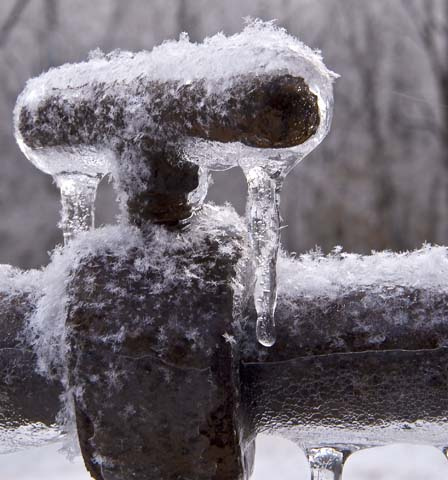What're your opinions regarding Prevent Frozen Pipes ?

Cold weather can damage your plumbing, particularly by freezing pipelines. Right here's exactly how to prevent it from taking place and what to do if it does.
Introduction
As temperatures decrease, the threat of icy pipelines rises, potentially resulting in pricey repair work and water damages. Comprehending just how to avoid icy pipelines is vital for homeowners in chilly environments.
Recognizing Frozen Pipelines
What creates pipelines to ice up?
Pipes freeze when revealed to temperature levels below 32 ° F (0 ° C) for extended durations. As water inside the pipelines freezes, it increases, putting pressure on the pipeline walls and possibly triggering them to burst.
Dangers and problems
Frozen pipelines can cause water system disruptions, property damage, and pricey repair work. Ruptured pipelines can flooding homes and trigger considerable structural damage.
Indications of Frozen Piping
Identifying frozen pipes early can prevent them from rupturing.
Exactly how to determine frozen pipelines
Look for decreased water circulation from taps, unusual smells or noises from pipelines, and noticeable frost on exposed pipelines.
Avoidance Tips
Protecting prone pipelines
Wrap pipelines in insulation sleeves or make use of heat tape to secure them from freezing temperature levels. Concentrate on pipelines in unheated or exterior areas of the home.
Home heating methods
Maintain interior rooms properly heated up, particularly locations with pipes. Open up cupboard doors to permit warm air to distribute around pipes under sinks.
Safeguarding Outdoor Pipes
Garden hose pipes and exterior taps
Separate and drain pipes garden tubes before wintertime. Install frost-proof faucets or cover exterior faucets with insulated caps.
What to Do If Your Pipelines Freeze
Immediate activities to take
If you think icy pipes, maintain taps open to eliminate pressure as the ice melts. Utilize a hairdryer or towels soaked in hot water to thaw pipelines slowly.
Long-Term Solutions
Structural modifications
Think about rerouting pipelines away from exterior walls or unheated areas. Include extra insulation to attic rooms, cellars, and crawl spaces.
Updating insulation
Invest in top quality insulation for pipelines, attic rooms, and walls. Appropriate insulation helps preserve regular temperature levels and reduces the threat of icy pipelines.
Verdict
Protecting against frozen pipelines needs proactive procedures and quick responses. By recognizing the reasons, signs, and preventive measures, homeowners can safeguard their pipes throughout winter.
5 Ways to Prevent Frozen Pipes
Drain Outdoor Faucets and Disconnect Hoses
First, close the shut-off valve that controls the flow of water in the pipe to your outdoor faucet. Then, head outside to disconnect and drain your hose and open the outdoor faucet to allow the water to completely drain out of the line. Turn off the faucet when done. Finally, head back to the shut-off valve and drain the remaining water inside the pipe into a bucket or container. Additionally, if you have a home irrigation system, you should consider hiring an expert to clear the system of water each year.
Insulate Pipes
One of the best and most cost-effective methods for preventing frozen water pipes is to wrap your pipes with insulation. This is especially important for areas in your home that aren’t exposed to heat, such as an attic. We suggest using foam sleeves, which can typically be found at your local hardware store.
Keep Heat Running at 65
Your pipes are located inside your walls, and the temperature there is much colder than the rest of the house. To prevent your pipes from freezing, The Insurance Information Institute suggests that you keep your home heated to at least 65 degrees, even when traveling. You may want to invest in smart devices that can keep an eye on the temperature in your home while you’re away.
Leave Water Dripping
Moving water — even a small trickle — can prevent ice from forming inside your pipes. When freezing temps are imminent, start a drip of water from all faucets that serve exposed pipes. Leaving a few faucets running will also help relieve pressure inside the pipes and help prevent a rupture if the water inside freezes.
Open Cupboard Doors
Warm your kitchen and bathroom pipes by opening cupboards and vanities. You should also leave your interior doors ajar to help warm air circulate evenly throughout your home.

We were guided to that article on How to prepare your home plumbing for winter weather from an associate on a different website. Liked our piece of writing? Please quickly share it. Let somebody else locate it. We value reading our article about How To Avoid Freezing Pipes.
Order Repair
Comments on “Protecting Your Pipes from Cold Weather: Effective Strategies”